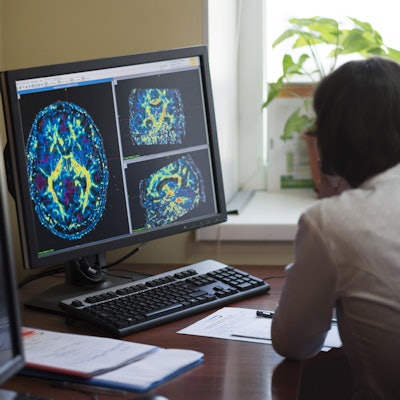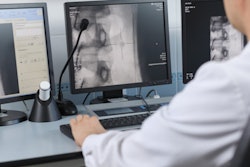
Radiology departments can rapidly transition to mostly remote interpretations by radiologists at home during the COVID-19 pandemic, but they will need to navigate a number of difficult challenges along the way, according to a clinical perspective published online May 21 in the American Journal of Roentgenology.
In their article, researchers from the University of Alabama at Birmingham (UAB) discussed how they dealt with financial, engineering, educational, and philosophical workflow issues and successfully deployed home PACS workstations for radiologists in response to the pandemic.
"Remote interpretation of imaging studies can contribute to social distancing, protect vulnerable radiologists and others in the hospital, and ensure seamless interpretation capabilities in emergency scenarios," wrote the team led by Dr. Srini Tridandapani, PhD.
Prior to the pandemic, UAB's radiology department considered it essential to have a physical presence within the hospital and clinics, and it largely avoided remote interpretation, according to the researchers. Only two remote PACS workstations had been utilized and only for part-time use.
In mid-March, however, the department sought to deploy more than two dozen remote PACS workstations in order to achieve social distancing, protect the radiologists who have a high risk of complications if infected with SARS-CoV-2, and ensure that timely interpretations would continue as the pandemic progressed, according to the researchers.
Fortunately, much of the hardware needed had been recently purchased to replace end-of-life PACS computers and monitors and was being stored by the department.
"We decided to build the other PACS workstations with standard display monitors because the high-end monitors were only needed for display of radiographs and not required for display and interpretation of CT, ultrasound, and MRI studies," the authors wrote.
A hardware virtual private network (VPN) system was used in order to mirror the functionality of onsite workstations for the institution's iSite PACS (Philips Healthcare). The department's request for financial support for the hardware VPN system and 44 standard display monitors was quickly approved, and deployment of the remote PACS workstations commenced by the third week of the initiative's conceptualization.
Not enough funds were available to equip all radiologists with remote workstations, so difficult choices had to be made, according to the researchers. First, workstations were provided to four members of the emergency radiology section who lived out of state. This offered a number of benefits. Not only can emergency radiologists interpret exams across a broad range of modalities and organ systems but these remote radiologists could still provide remote services if many of the Birmingham-based radiologists were infected, the authors said.
The various section chiefs were asked to decide on the allocation of the other workstations, balancing the need to get work done with the imperative of protecting at-risk radiologists. The department emphasized that the workstations will be used temporarily during the duration of the COVID-19 crisis and will then need to be returned.
The drop in imaging volume and adoption of remote reading has significantly reduced the number of onsite radiologists. However, each section has at least one radiologist onsite in order to provide technologists with backup and to reassure them of their constant presence and availability, according to the researchers.
"For the same reason, we require radiologists with evening or weekend call responsibilities to appear in person," they wrote. "During these evening and weekend shifts, we have a very small number of radiologists onsite and dispersed in different rooms, which increases social distancing."




















